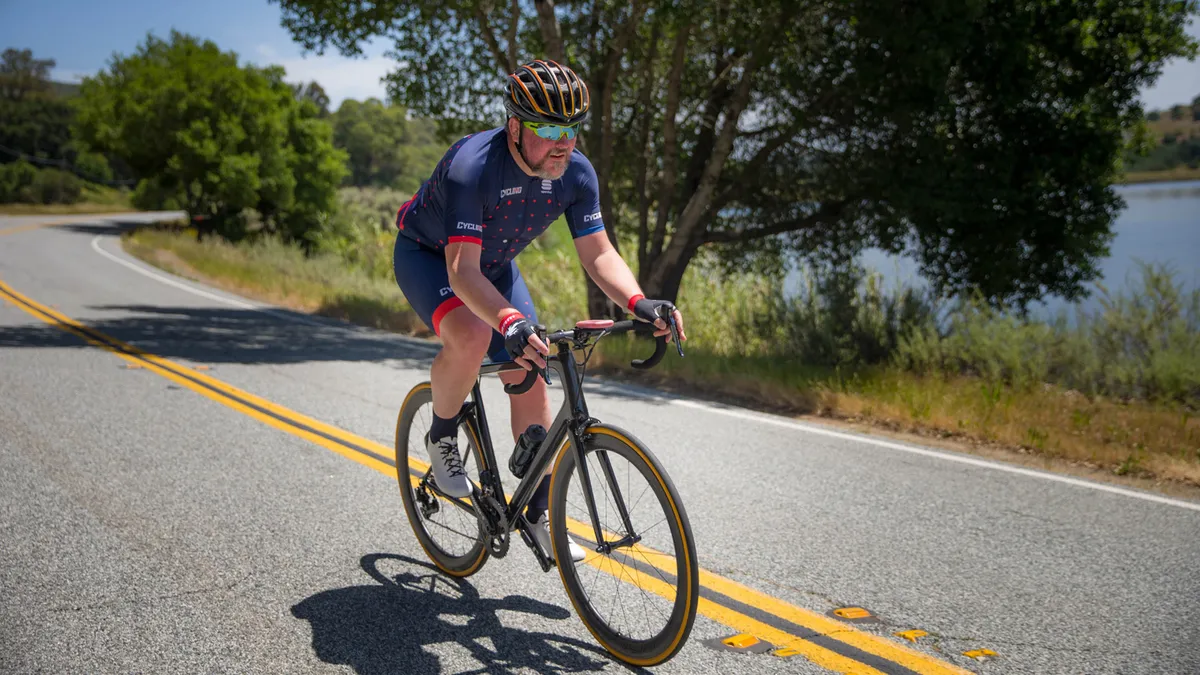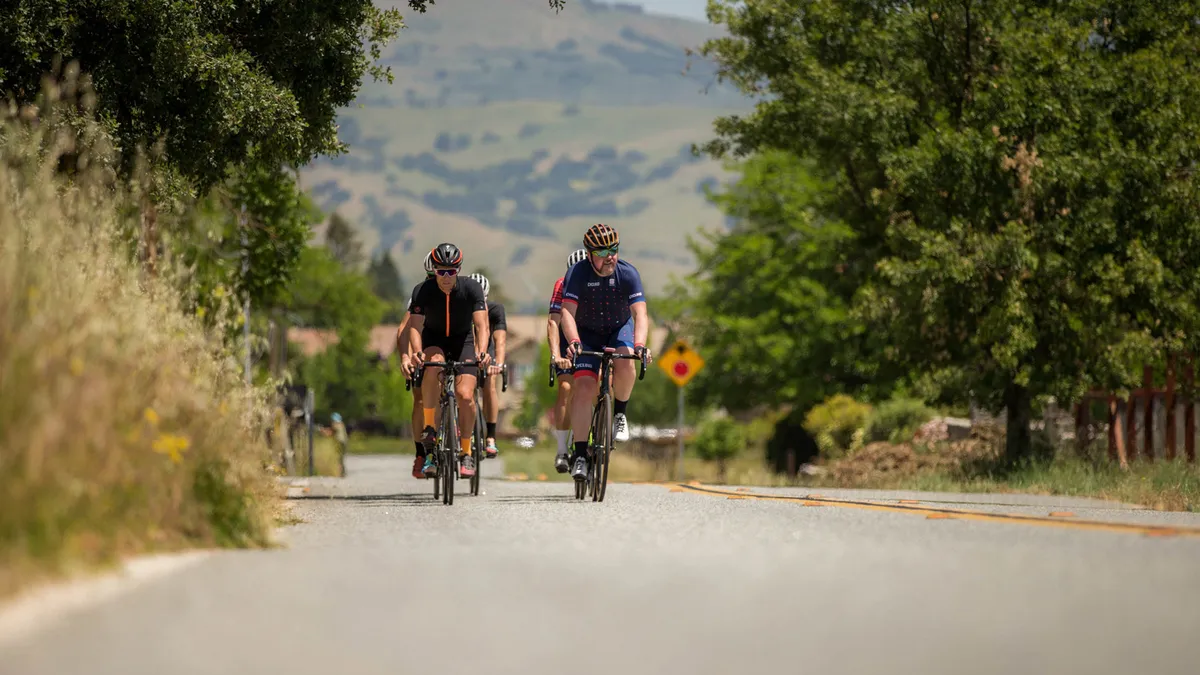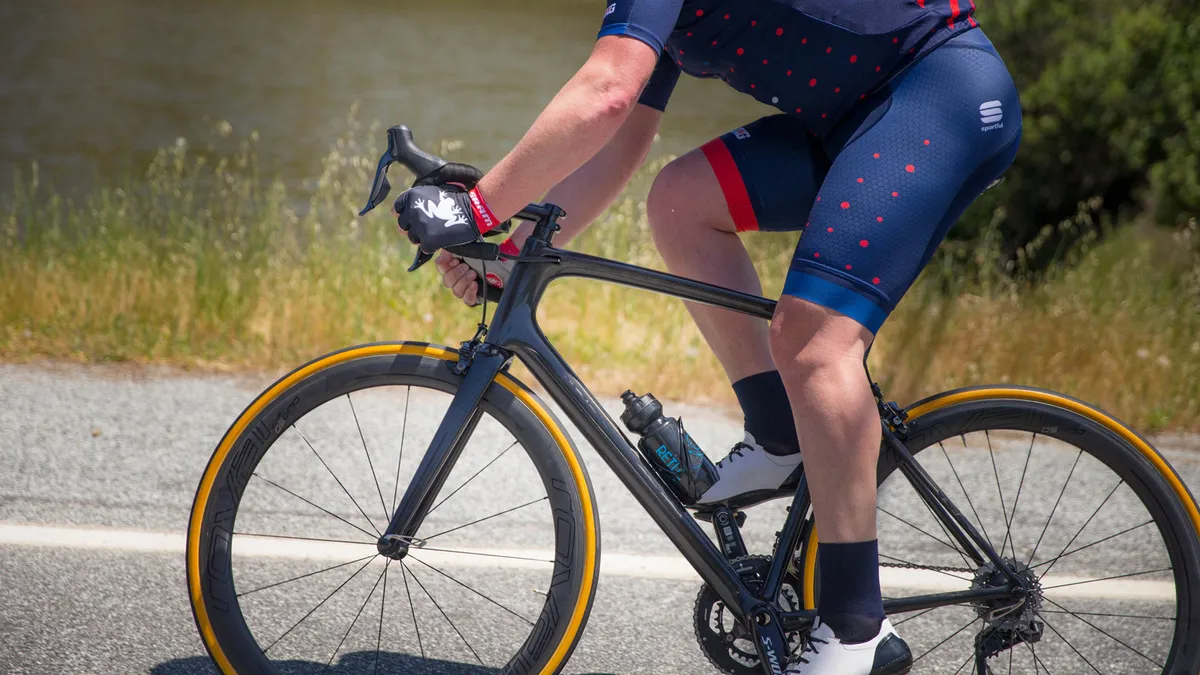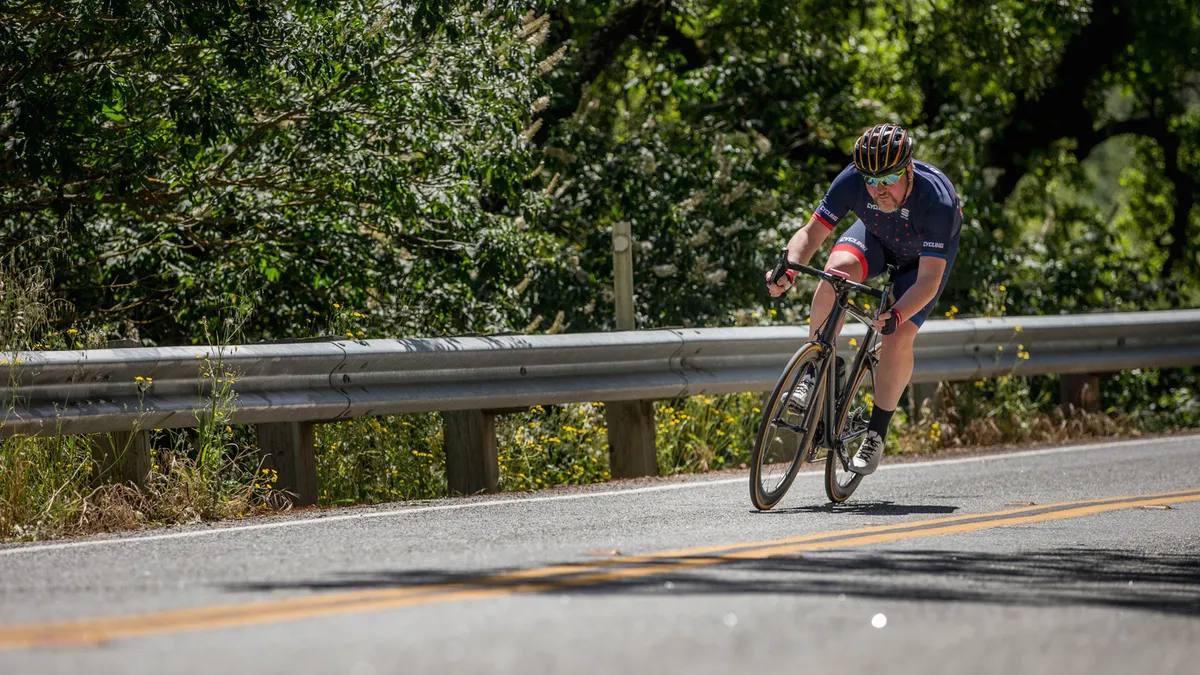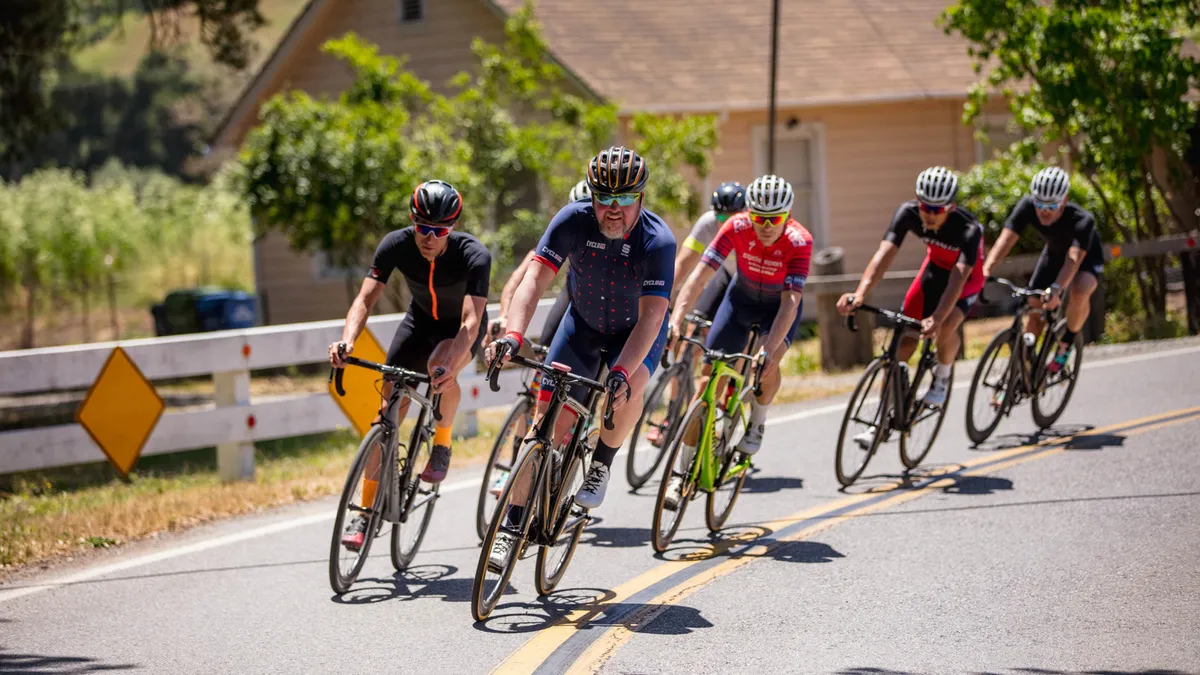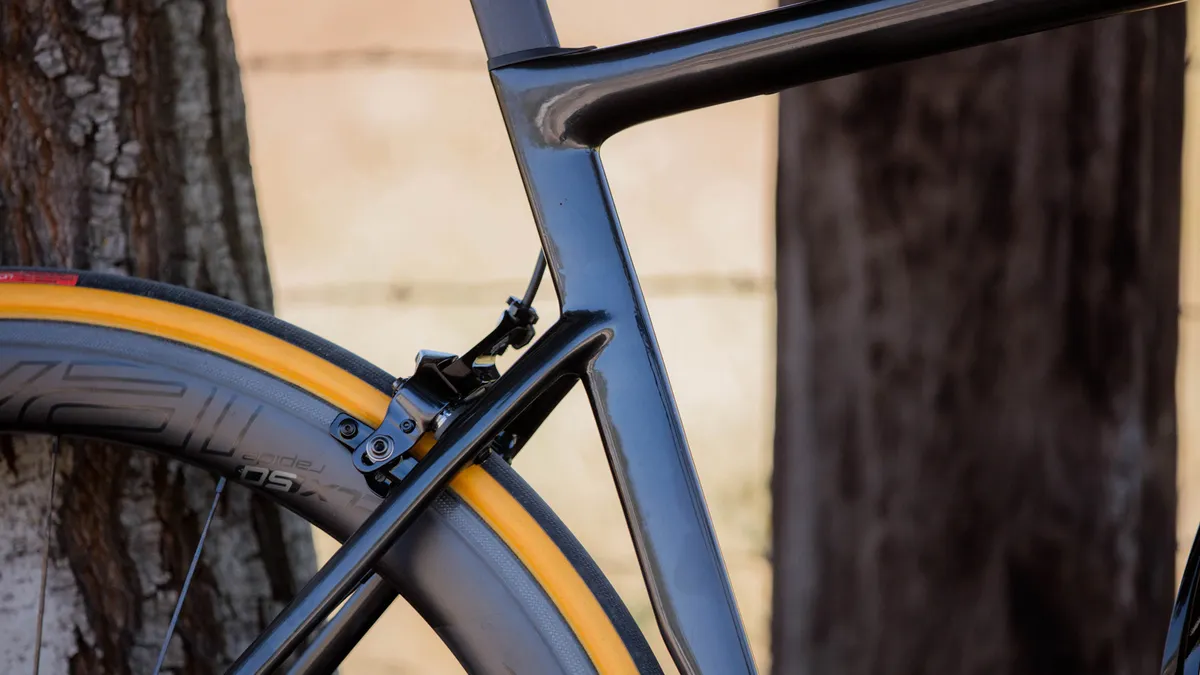I recently got the chance to ride the all-new Specialized Tarmac on successive days, mixing in tough climbs, super technical descents and fast flowing rolling roads over a variety of tarmac, from mirror smooth major roads to frost and water scarred passes.
Specialized Tarmac specifications
- Weight: 6.63 kg (with pedals, cages, Garmin mount), 6.39kg (no pedals/extras)
- Size: 58 cm
- Frame: 58cm S-Works 12r carbon
- Fork: S-Works 12r carbon cut at 22mm of spacers SL stem
- Gears: Shimano Dura-Ace 9150 Di2, (50/34, 11-30)
- Brakes: Dura-Ace 9100 direct mount brakes
- Wheels: Roval CLX 50
- Tyres: Specialized 26mm cotton
- Tubes: Specialized 60mm Valve lightweight
- Saddle: Specialized S-Works Phenom with carbon rails
- Post: Specialized S-Works Tarmac D-post
- Stem: Specialized SL Stem 110mm x 6 degree
- Bar: Specialized S-works carbon Short and Shallow 42cm x 125mm drop x 75mm reach
- Cassette: Shimano Dura-ace 9100 Cassette 11t-30t
- Cranks: S-Works with compact 50t-34t Specialized chain rings (made by praxis) Carbon S-Works 110mm spider
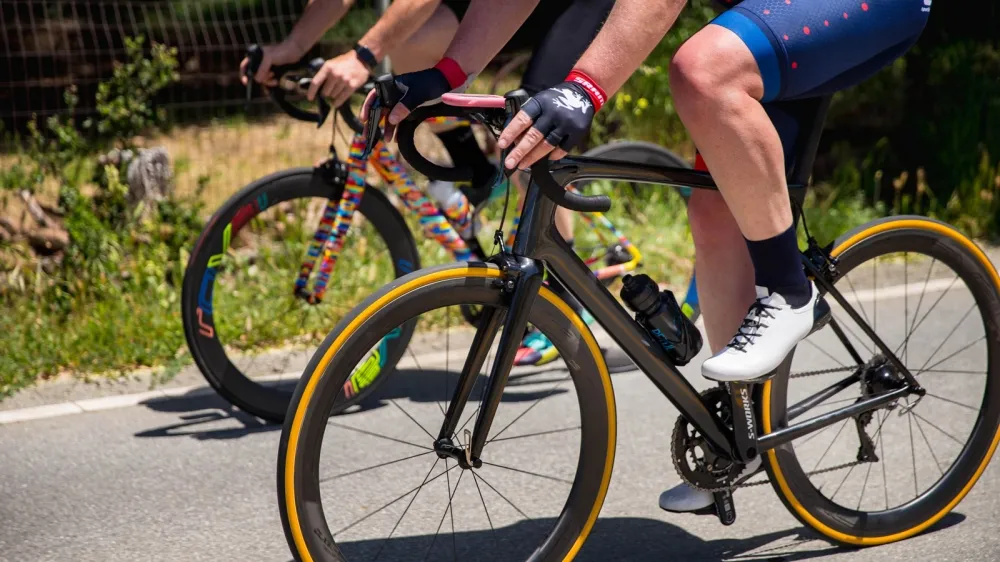
The bike I rode was a Project Black final prototype, which features an S-Works grade frame and fork (albeit painted in plain black, not the superlight vapor paint) built up with a new Dura-Ace Di2 groupset complete with its auto-shift options (which I left alone on the first day, and checked out the semi-auto shifting on the second, where it shifts up or down two cogs at the rear to sync with shifts on the chainset).
The build is completed with the new CLX50 wheels shod with S-Works Turbo 25mm rubber. Specialized tells us that the complete S-Works models will ship in pretty much this spec.
The overriding feel of the new Tarmac is a familiar one. It’s the same sharp, super nimble feel of the previous SL5, but every element of the bike's handling and road manners has been tweaked. Its power transfer is impeccable, and the combination of the lightweight chassis and light wheels makes for a bike that welcomes steep slopes, encouraging you to rise out of the saddle and dance on the pedals to best double digit gradients.
On descents, especially technical switchback descents littered with fast cambered corners and hairpins, the nimble nature of the steering response makes the bike easy to correct when you enter with a little too much vigor.
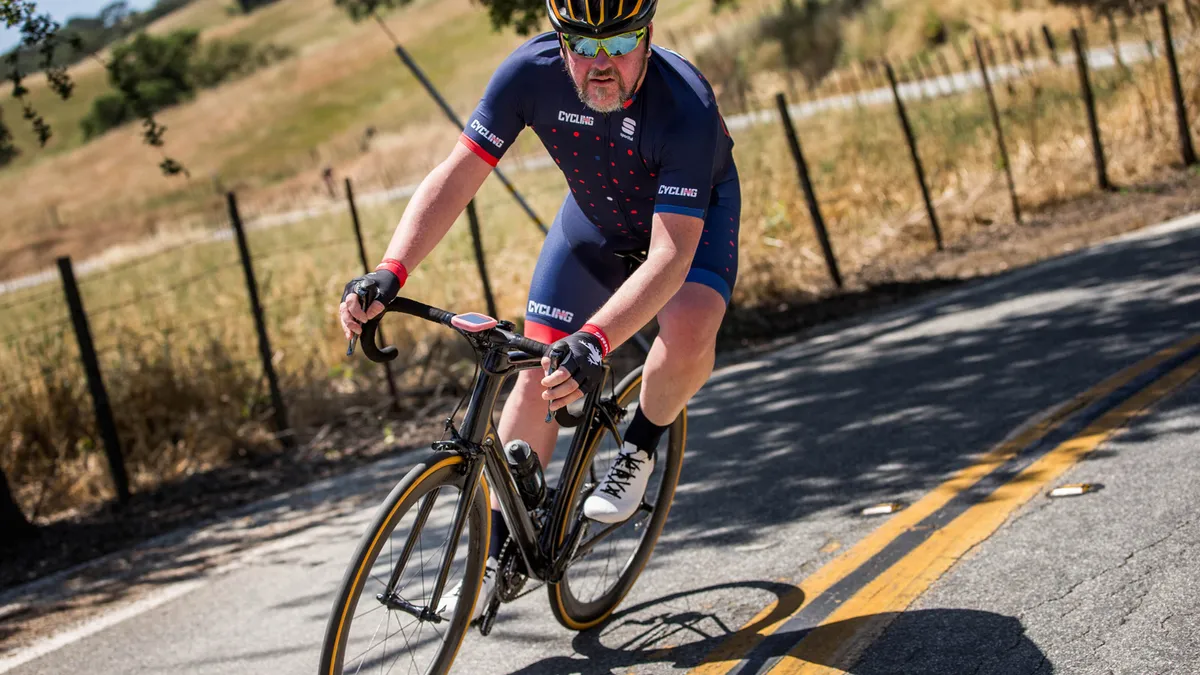
The CLX50 wheels make a fine companion to the Tarmac frameset, the aero profile copes well in gusty conditions, and the braking impresses in the dry. The only protests I got from the rims were at the end of a fast twisty descent with a sudden stop at the base at a T-junction where the gave a heat induced howl, but only for a second.
The braking comes from the latest Dura-Ace units and the Tarmac is designed around direct mount brakes front and rear. The feel of the braking is superb. There’s no vibration, heaps of feel, and the direct mount standard was used up front because it offers both stiffness gains and an aero advantage as the crown can be shaped for better aerodynamics with the twin bolt setup.
On the rear the seat stays aren’t joined in the traditional way. Instead, they rely on the brake for rigidity; that and minimal superlight bracing spar that bolts on the back of the brake mounts, another tech touch that sets the Tarmac apart.

Where I really was impressed was with the balance the lightweight chassis exudes. Often with super-light race bikes when you hit a set of ripples or bumps in the road surface the bike can buck and bounce, forcing you to correct and slow down. The Tarmac, however, takes the initial jolt and then settles quickly meaning with every increase in mph you gain confidence and the more you acclimatise with its character the more confident you feel.
I haven’t found this sort of confident handling in many race bikes, but the Tarmac feels every inch the equal of my all time favourites, Cannondale’s Evo and BMC’s Team Machine SLR01.
The ride position is pretty much the same as the previous Tarmac, and so it should be as the only tweak Specialized has made to the established geometry is to drop the bottom bracket height by 3mm to counter the switch to 25c tyres from 23s which were most popular when the SL4 debuted.
The new bike feels much more compliant at the rear, too. That's just as you’d expect from a design that matches super-dropped slender seat stays to the new D-shaped seatpost which has been engineered to offer some compliant flex - not as much as the radical CG-R post found on the Roubaix, but certainly much more give than your average carbon post.
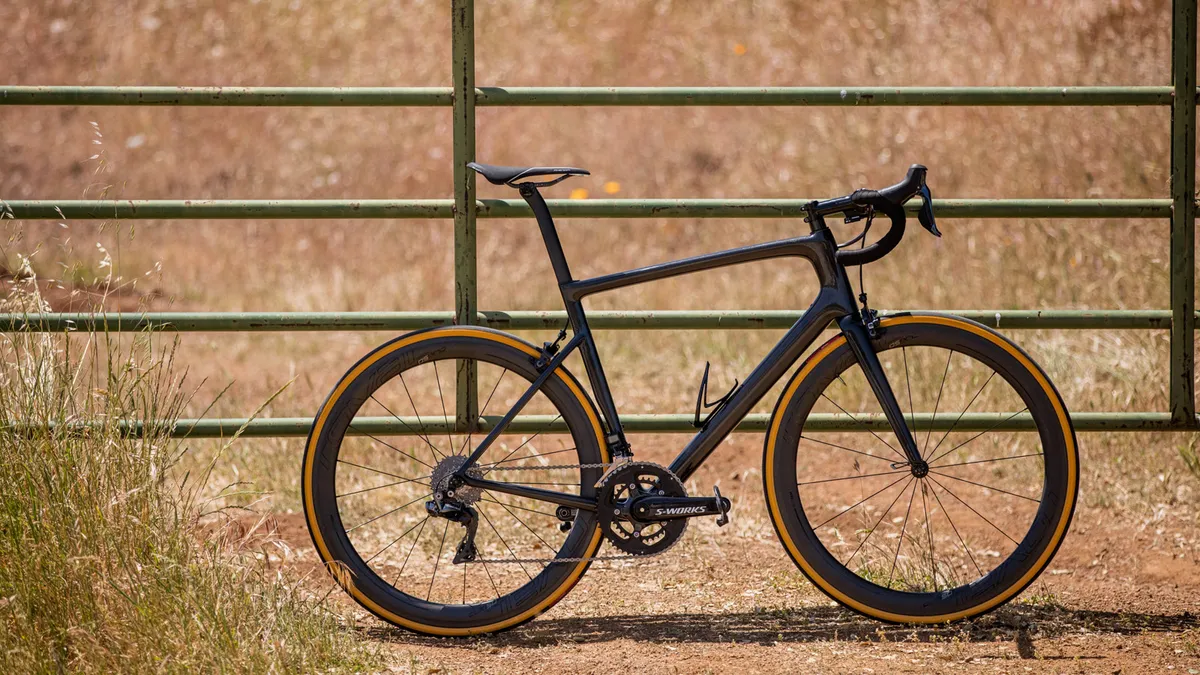
Specialized Tarmac early verdict
In all the new Tarmac feels like an impressive achievement. Specialized has taken everything about the ride character of the SL4 with its massive bottom bracket shell, chainstays, and oversized tubing and managed to replicate that in a slender, delicate looking and radically different design, infused with a little more compliance just where you want it.
The Tarmac is going to be one to watch for 2018
Does that mean the Tarmac is now the bike for all people? Well maybe, if you like your ride to be long, low and light. For long, long hours in the saddle over challenging surfaces I’d still head for the Roubaix, and aero fans may still opt for the Pro’s fave Venge Vias.
If, however, I was heading for an Alpine adventure and some seriously challenging climbs then the Tarmac would be the ideal choice, with its featherweight of just over six-and-a-half kilos fully loaded (pedals, cages, Garmin mount) especially given the confidence it exudes when heading downhill. When the disc model arrives in early 2018 (its pretty much finished, we’ve seen it) then that could well be one of the truly great descending machines.
It’s hard to rate a machine that you’ve only ridden in unfamiliar territory, and I for one can’t wait to give it a try on home soil, but rest assured the Tarmac is going to be one to watch for 2018, and not just underneath some of the best pros riding the grand tours.
